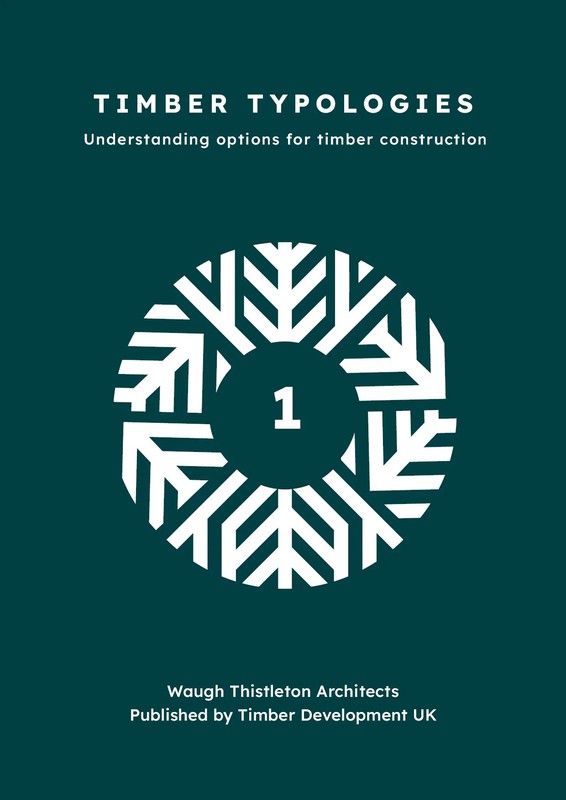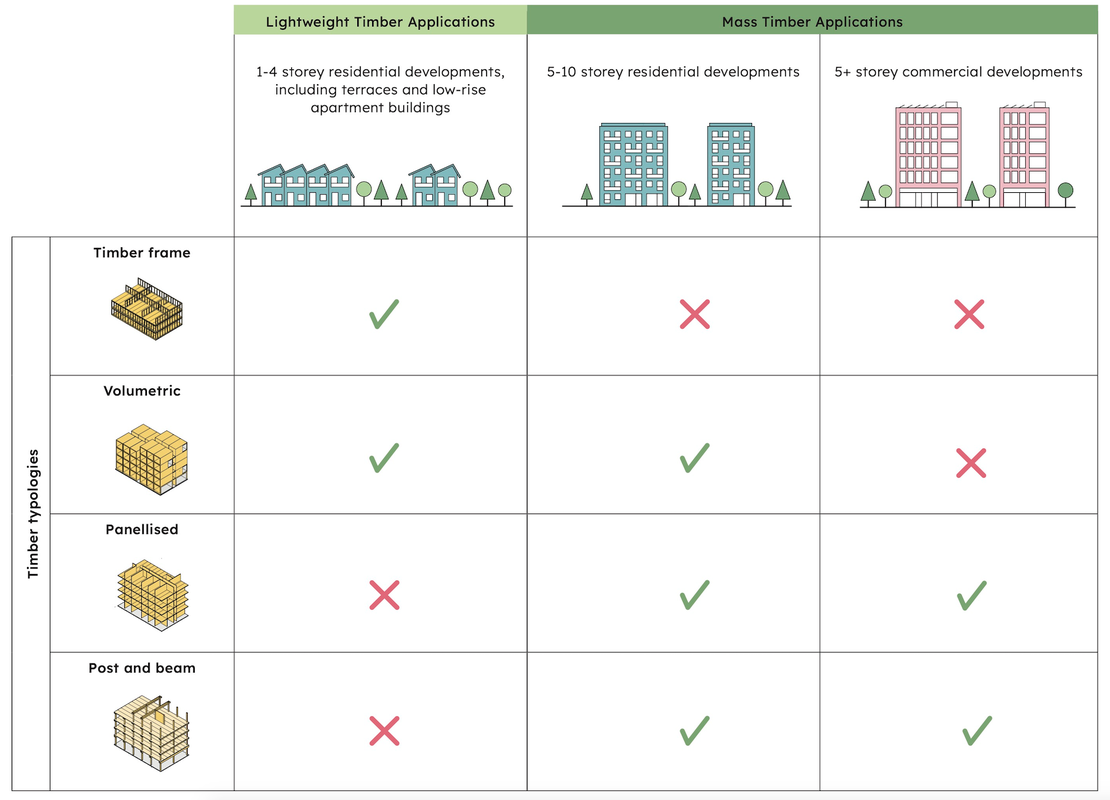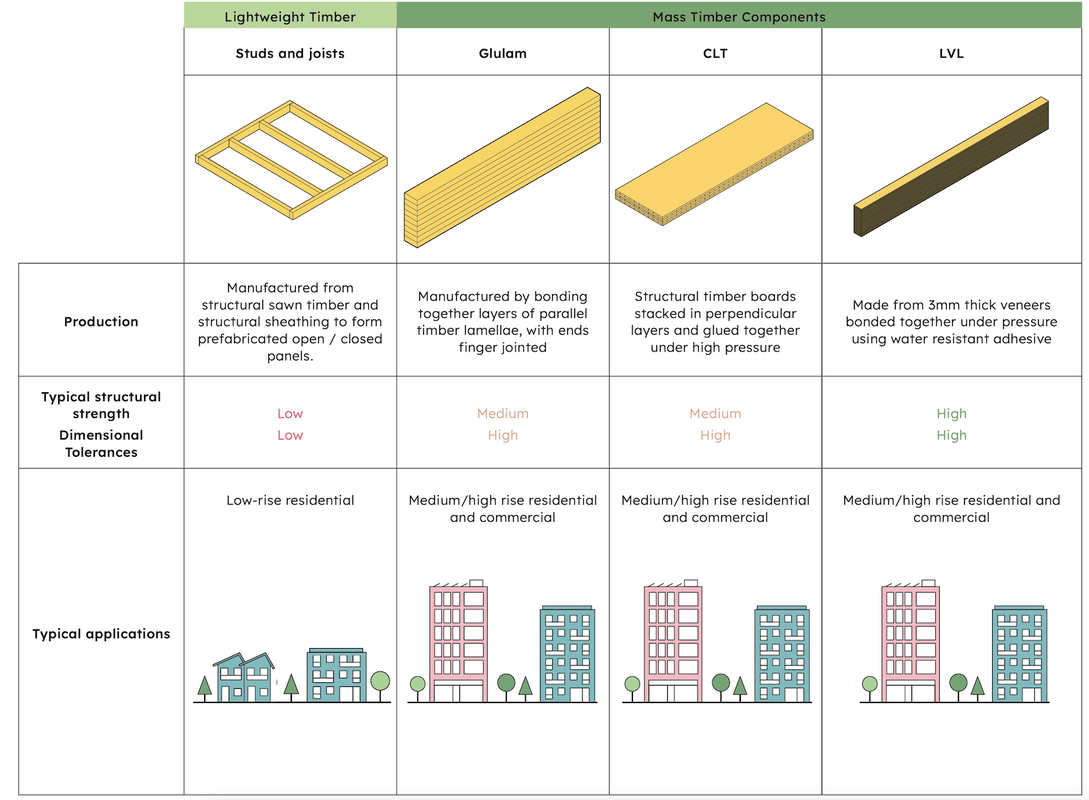Timber Typologies
A step-by-step guide on how to build in wood
Written by Waugh Thistleton Architects and published by Timber Development UK (TDUK), Timber Typologies is a comprehensive guide to the different types of timber building systems, and their most appropriate uses.
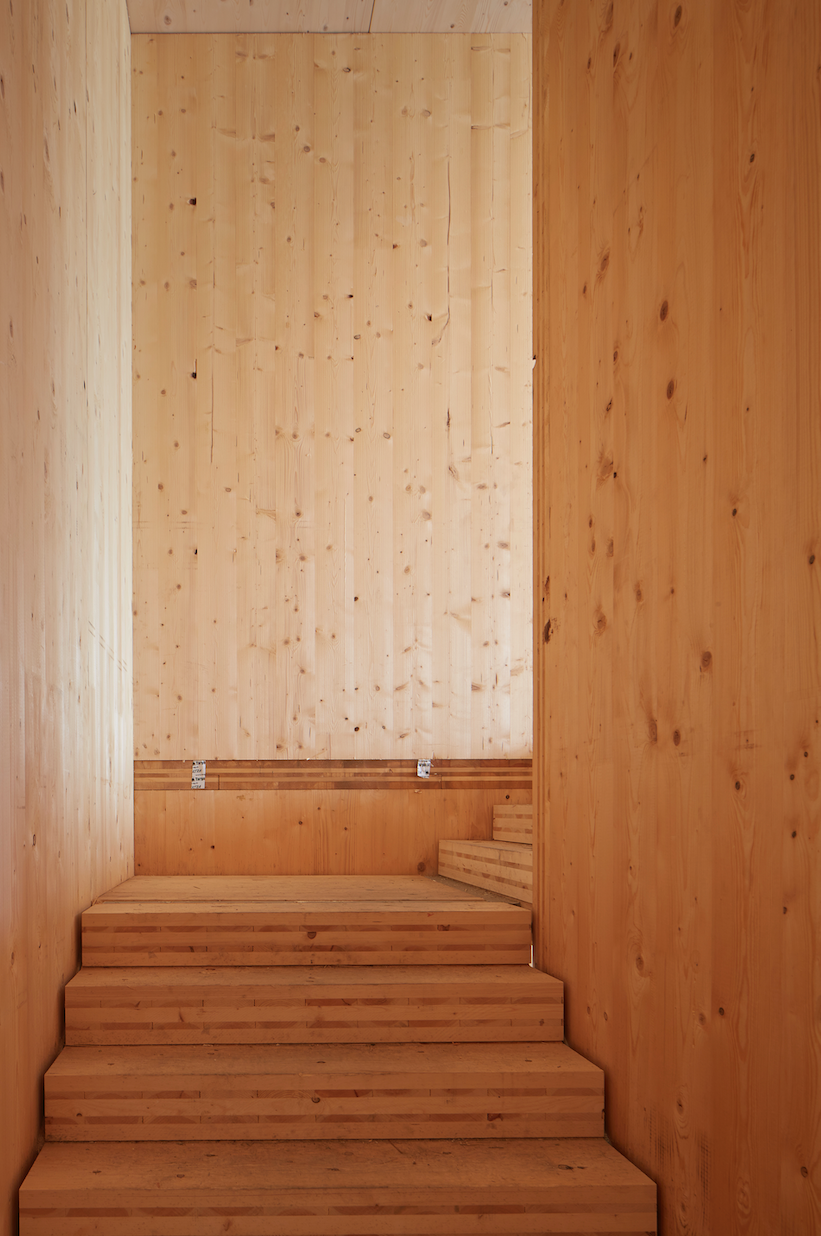 Zoom image
Zoom image
Construction of Curtain Place
Intended as a public recourse, this body of research looks to clarify the language used by architects, policy makers and contractors to discuss timber construction by standardizing the terminology used to describe the different ways to build in mass-timber. In codifying a set of design principles that work to harness the benefits of each system, Timber Typologies looks to advance timber construction by de-mystifying and simplifying the ways in which key industry stakeholders discuss building with wood. Using our expertise as world-leaders in timber architecture, we address the misconceptions that hinder the wide-scale adoption of mass-timber as a construction material.
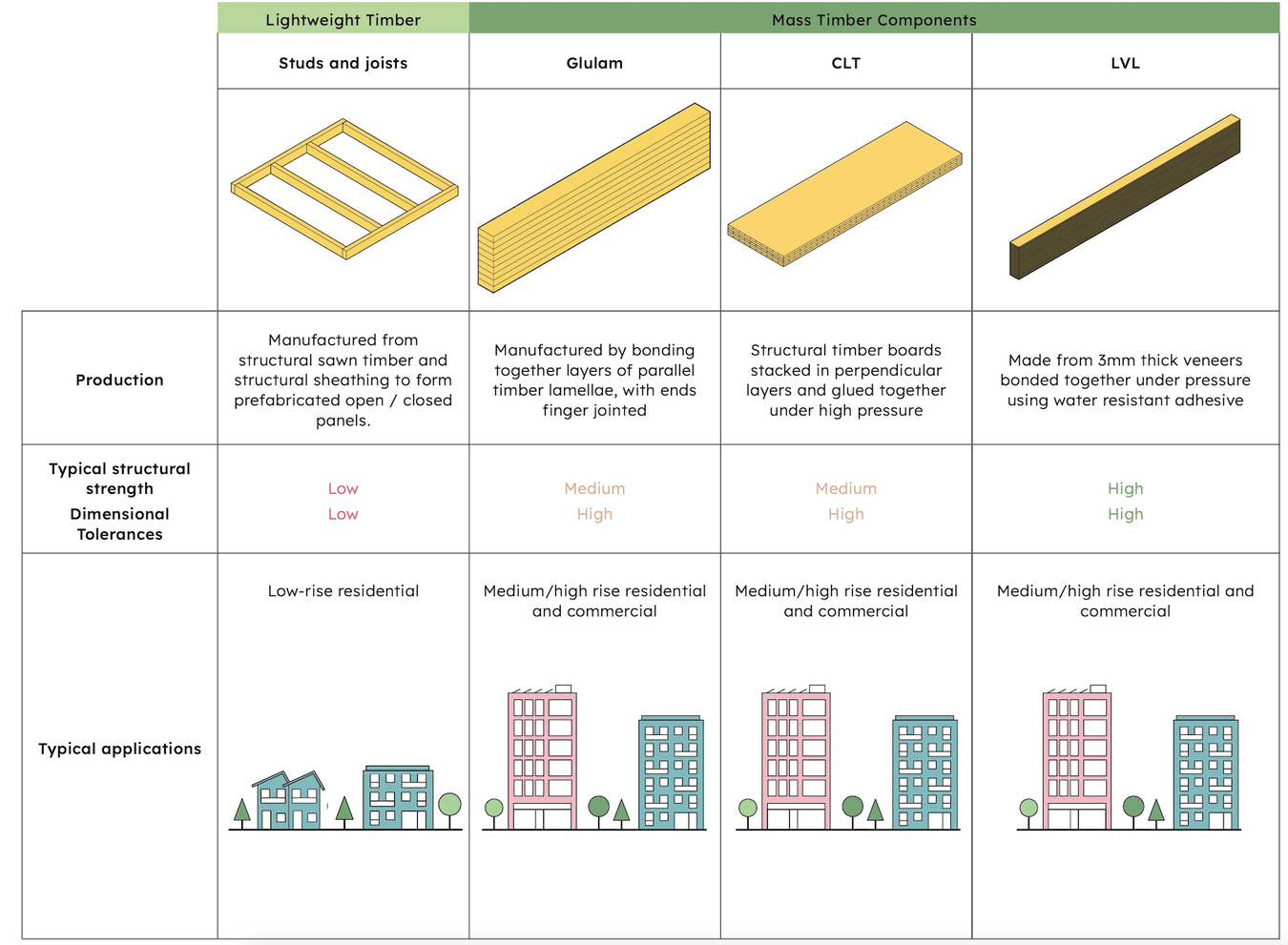 Zoom image
Zoom image
Timber Typologies products diagram
This book contains detailed summations of each phase of the design, procurement, and construction of a timber structure. Considering the distinct types of timber found in forests of different locations and climate, this handbook offers guidance on the development of renewable forestry industries that comply with the regulatory bodies governing the legal harvest of timber globally. This step-by-step manual outlines the different types of timber components and offers guidance on how they can be combined to create specified structural systems, optimized for context and use.
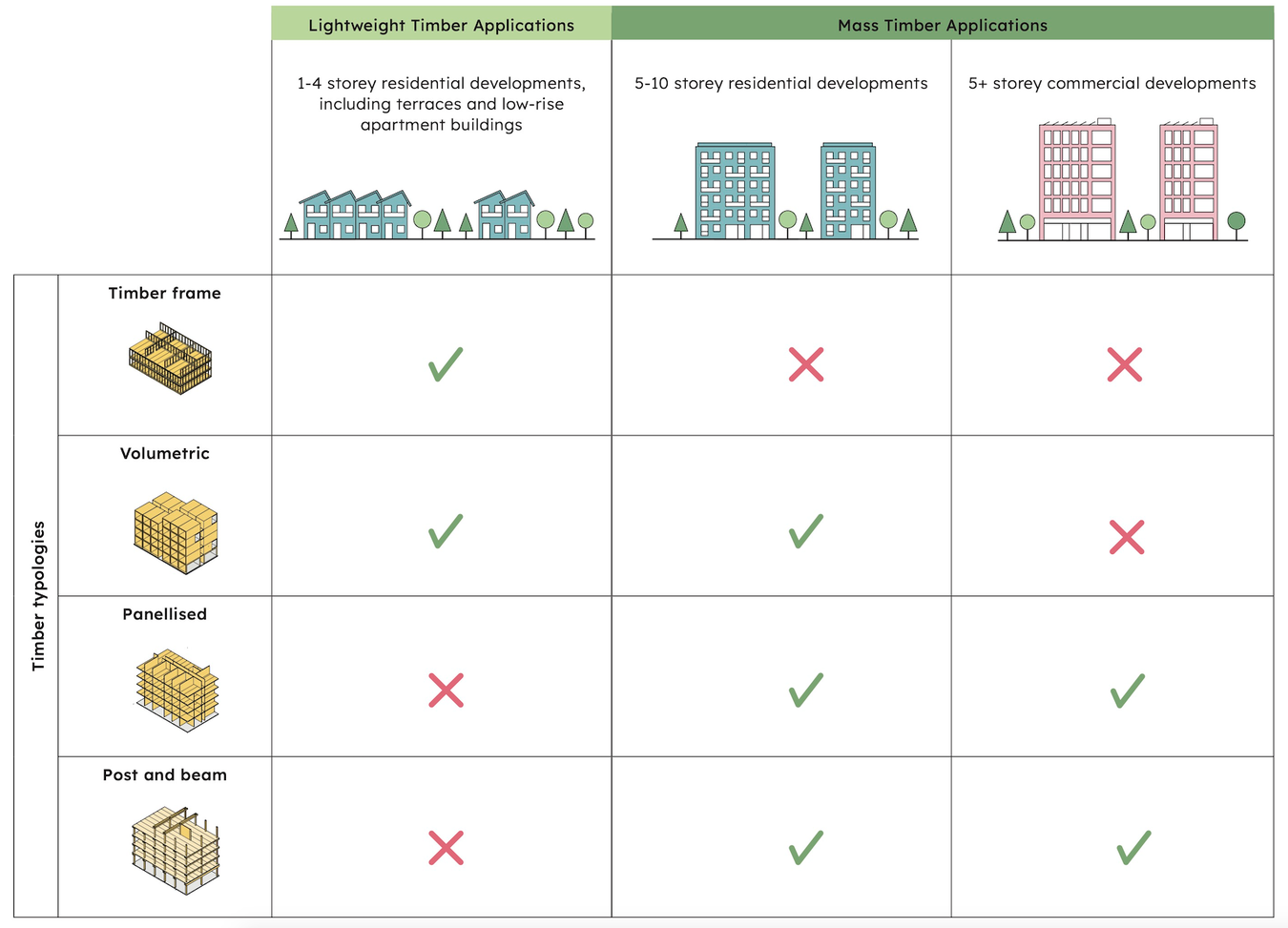 Zoom image
Zoom image
Timber Typologies applications diagram
Timber Typologies is the first in a series of essential books. Followed by Timber Policy, which outlines the ways in which different countries can promote timber use, and Timber LCA, a guide on how to produce Life Cycle Assessments for timber buildings. By providing clear and concise guidance on the use of timber as a structural building material, this publication aims to change public perception and industry perspective towards the use of mass-timber.
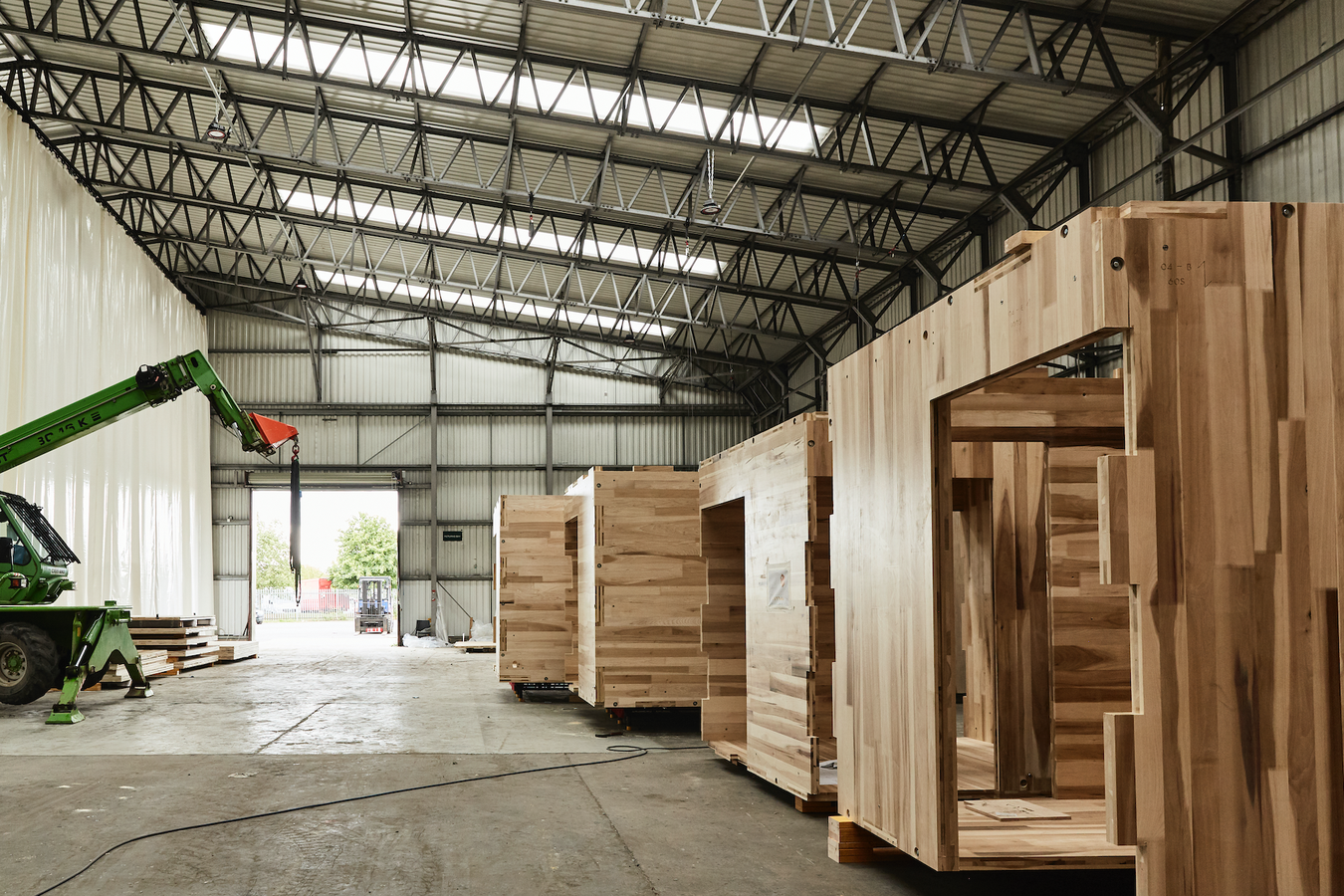 Zoom image
Zoom image
Volumetric modular construction using CLT panels
Designing in timber can reduce the embodied carbon of a building by half, without compromising the integrity or functionality of a design. This book helps to show people how.
Click here to view the PDF of Part 1, Timber Typologies and Part 2, Timber Policy Report.
Visit the TDUK website to download the Timber Typologies book and learn more about building with timber.
